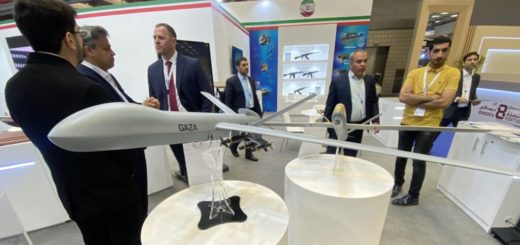Sikorsky discusses future-ready Black Hawk and CH-53K at Paris Air Show
At the Paris Air Show 2025, American aircraft manufacturer Sikorsky has reaffirmed its commitment to innovation across its rotary-wing family, highlighting ongoing modernization efforts for the iconic Black Hawk, the versatility of the MH-60R/S Seahawk fleet, and the advanced capabilities of the CH-53K King Stallion.
Black Hawk: Enduring relevance through modernization
Songquan Deng / Shutterstock.comMore than four decades after its introduction, the Black Hawk continues to prove its operational value. With over 5,000 aircraft flying in 36 countries and more than 15 million flight hours logged, including five million in combat, Sikorsky is doubling down on modernization to keep the platform relevant.
Speaking at the briefing, Jay Macklin, Sikorsky’s Director of Business Development for Army and Air Force Systems, noted that the company is working closely with the US Army on its 11th multi-year procurement deal, which would extend Black Hawk production from 2027 to 2032. This contract is expected to support not only domestic deliveries but also new foreign military sales (FMS), reflecting strong continued demand for the type globally.
Key priorities for the platform include improved external lift, better modularity, and integration into joint all-domain operations. The Black Hawk is being adapted to embrace modular open systems architecture (MOSA) and launched effects integration, making it easier for operators to tailor the aircraft to evolving threats.
“We know the Black Hawk of tomorrow must be better than the Black Hawk of today,” Macklin summarized.
Autonomy is another major focus. Sikorsky is experimenting with its Matrix software on legacy airframes, including a 1970s vintage UH-60A outfitted with fly-by-wire controls. The aircraft can now fly entirely autonomously or operate with varying levels of assistance, such as an ‘intelligent co-pilot’ mode that reduces pilot workload during complex missions.
“Each customer can choose the level of autonomy they need,” Macklin said. “The capability is there today.”
MH-60R Seahawk: Adapting naval helicopters to modern threats
FiledIMAGE / Shutterstock.comOn the naval front, Sikorsky sees growing interest in its MH-60R Seahawk platform, especially following the type’s involvement in real-world operations in the Red Sea.
“The Romeo was on the forefront of detecting and helping to intercept Houthi-launched drones,” said Eric Schreiber, Director of Business Development for Maritime Systems at Sikorsky.
Seven countries currently operate the MH-60R series, and all benefit from integration into the US Navy’s common upgrade path. Any block upgrade developed for the Navy can be made available to international operators, helping preserve fleet cohesion and reduce obsolescence risks.
Despite its expanding mission set, including counter-drone tasks and networked sensing, anti-submarine warfare remains the platform’s core role. Schreiber confirmed that the US Navy plans to operate the Romeo through the 2050s and is now exploring future mission system upgrades to keep the platform viable into the next decades.
CH-53K: Heavy lift reimagined
VanderWolf Images / Shutterstock.comThe CH-53K King Stallion is Sikorsky’s most advanced platform to date, and the company’s first fully digital helicopter. According to Frank Crisafulli, the company’s Global Business Development Director, the aircraft was developed from the ground up to meet modern operational and sustainment needs. “It looks like the old aircraft, but it is nothing like it,” he said.
With over 18 aircraft delivered and nearly 10,000 flight hours logged, the King Stallion is proving its value in service. Early squadrons are reporting availability rates above 90%, thanks to predictive maintenance enabled by the aircraft’s digital backbone.
Sikorsky also emphasized the CH-53K’s relevance for future missions, from special operations and disaster relief to optionally piloted logistics. The aircraft’s fly-by-wire controls and digital design make it a prime candidate for AI-enabled features and advanced autonomy, particularly in joint and multi-domain environments.
Despite Germany’s recent selection of the Chinook over the CH-53K, Sikorsky sees strong potential for the King Stallion in Europe.
“There’s a growing realization that if you’re planning for the next 60 years, modernization alone isn’t enough,” Crisafulli said. He added that the CH-53K and Chinook should be viewed as complementary assets, not direct competitors.
FMS or DCS, what’s the difference?
Sikorsky also addressed questions about its dual production lines for the Black Hawk: the UH-60M built in Connecticut under US government contracts (FMS) and the S-70i manufactured by PZL Mielec in Poland under direct commercial sale (DCS). Both aircraft share a high level of parts compatibility, and customer preference typically dictates which path is chosen.
“Some countries prefer going through the FMS route, while others opt for a more flexible, customized DCS version, but both are part of the same Black Hawk family,” Macklin said.
Networked, digital, and ready for tomorrow
Across all platforms, Sikorsky’s message at the show was clear: staying relevant in the 21st century means more than airframe performance. From the Black Hawk to the CH-53K, the company is pushing its rotorcraft into the digital age, with autonomy, artificial intelligence and open architectures at the center of its vision. As global demand rises, Sikorsky’s challenge will not be proving its capabilities, but rather ensuring that regulatory and acquisition frameworks can keep pace.
RELATED
NATO Multinational MRTT Fleet to rise to 12 with new Airbus A330 order
The post Sikorsky discusses future-ready Black Hawk and CH-53K at Paris Air Show appeared first on AeroTime.
At the Paris Air Show 2025, American aircraft manufacturer Sikorsky has reaffirmed its commitment to innovation across its…
The post Sikorsky discusses future-ready Black Hawk and CH-53K at Paris Air Show appeared first on AeroTime.





